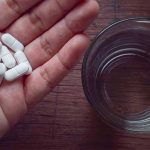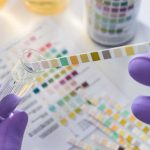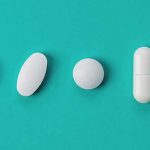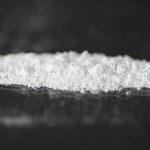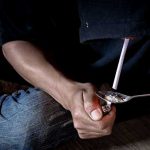Hydrocodone is a prescription opioid used to treat chronic or severe pain. Long-term use can result in physical dependence, which can cause withdrawal symptoms if you stop or reduce use.
Depending on the severity of dependency, withdrawal symptoms may begin to appear within 12 hours and last up to ten days. If you or a loved one struggles with opioid addiction, a medical detox program can alleviate unpleasant or severe symptoms.
Hydrocodone Withdrawal Timeline
Hydrocodone is the active ingredient in numerous opioid painkillers, including Norco and Vicodin. Although hydrocodone can be an effective painkiller, it is also highly addictive. Eventually, your body may become dependent, which means it relies on the drug to function.
If you stop or reduce the amount you take too quickly, you will likely experience hydrocodone withdrawal symptoms. Although opioid withdrawal symptoms are not life-threatening, symptoms may become severe.
In addition, intense cravings can lead to a relapse, which is associated with a high risk of overdose if you have been abstinent.
Factors that can affect the severity of hydrocodone withdrawal include:
- how long you’ve taken hydrocodone
- how frequently you used it
- if you are dependent on other drugs, along with hydrocodone
- mental and physical health
Acute Withdrawal
The first stage of the withdrawal process involves acute withdrawal symptoms. Hydrocodone leaves your system quickly and you may begin to experience symptoms 8-12 hours after your last dose.
Initial symptoms of withdrawal may include:
- agitation
- anxiety
- muscle aches
- watery eyes
- runny nose
- trouble sleeping
- sweating
- yawning
- stomach cramping
- diarrhea
- dilated pupils
- goosebumps
- nausea/vomiting
- intense cravings
Symptoms may peak 24-72 hours after you stop hydrocodone. According to the Substance Abuse and Mental Health Services Administration (SAMHSA), these withdrawal symptoms can last 4-10 days. The safest way to treat acute withdrawal symptoms is in a professional detox program.
Long-Term Withdrawal
Long-term withdrawal, also known as post-acute withdrawal, are symptoms that persist weeks or months after stopping hydrocodone. Long-term withdrawal symptoms range in severity and may interfere with daily life.
Symptoms of withdrawal may include:
- depressed mood
- irritability
- fatigue
- cravings
- impaired concentration
- anxiety
Professionals at an addiction treatment center can help you address difficult symptoms and prevent relapse.
Medical Detox Programs
Quitting hydrocodone on your own can be challenging. Even if you have mild withdrawal symptoms, a detox is safer than quitting cold turkey. An inpatient detoxification program provides support from medical professionals who will monitor withdrawal symptoms.
You may receive the following medications to ease uncomfortable symptoms:
- clonidine, for anxiety and high blood pressure
- methadone or buprenorphine, to reduce overall withdrawal symptoms
- loperamide, for diarrhea
- ibuprofen, for muscle aches
- melatonin, for sleep
Hydrocodone Addiction Treatment Programs
If you struggle with a substance use disorder (SUD), professional treatment programs can help you every step of the way, from intensive rehab programs to aftercare services.
Medication-Assisted Treatment (MAT)
If you struggle with opioid addiction, medication-assisted treatment can be a valuable addition to your treatment plan.
According to the National Institute on Drug Abuse (NIDA), the United States Food and Drug Administration (FDA) has approved several medications for the treatment of opioid use disorders:
- buprenorphine, which partially activates opioid receptors to reduce cravings/withdrawal symptoms
- buprenorphine/naloxone (Suboxone), a combination medication that reduces cravings
- methadone, which fully activates receptors to block cravings/withdrawal symptoms
- naltrexone, which blocks the pleasurable side-effects of opioids to reduce drug use
Along with therapy, these medications can be effective for reducing drug abuse and maintaining long-term recovery.
Inpatient Rehab
Although a detox program can help treat the acute symptoms of opiate withdrawal, you may still experience some symptoms after you leave. Feelings of depression, anxiety, and irritability along with cravings can be difficult to cope with, even after hydrocodone is out of your system.
If you have a severe addiction, your treatment provider may recommend an inpatient treatment program. Inpatient rehab, also referred to as a residential program, offers a variety of evidence-based services, including behavioral therapy, support groups, and individual counseling.
Outpatient Rehab
Partial hospitalization programs (PHPs) and intensive outpatient programs (IOPs) allow you to live at home and travel to weekly treatment sessions. This may be a good option for someone who cannot live away from home or has a mild addiction.
Outpatient programs are also beneficial as a step-down service following a residential program.
Aftercare Programs
Aftercare services are an important part of the recovery process. They connect you with outside resources that help you maintain your recovery and mental health. Depending on your needs, you may receive information about sober living options, 12-step groups, and counselors in your area.
At Northeast Addictions Treatment Center, we value comprehensive services that are tailored to your needs. To learn more about our substance abuse treatment programs, please call our helpline today.
Sources
- National Institute On Drug Abuse (NIDA) — Medications for Opioid Overdose, Withdrawal, & Addiction
- National Library of Medicine: MedlinePlus — Opiate And Opioid Withdrawal
- National Library Of Medicine: StatPearls — Opioid Withdrawal
- Substance Abuse And Mental Health Services Administration (SAMHSA) — Protracted Withdrawal
Written by
Northeast Addition Editorial Team
©2024 Northeast Addition Center | All Rights Reserved
This page does not provide medical advice.

